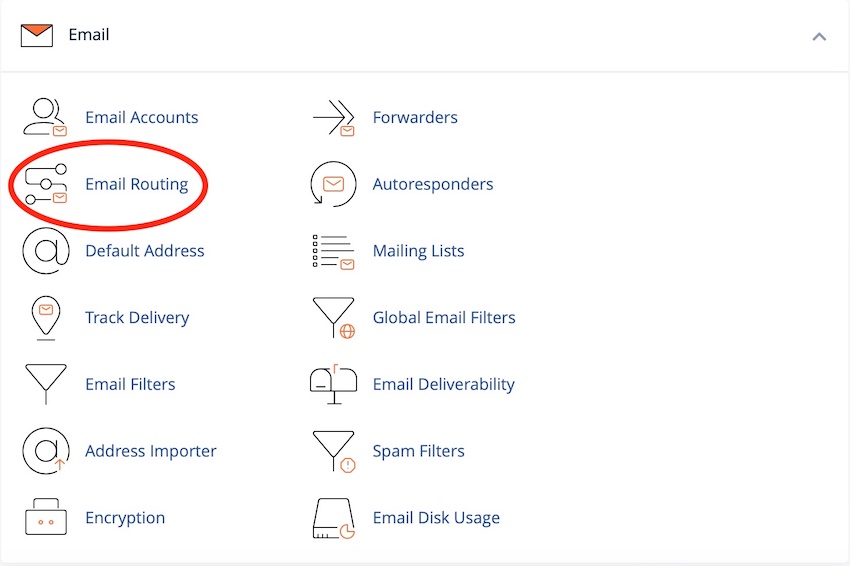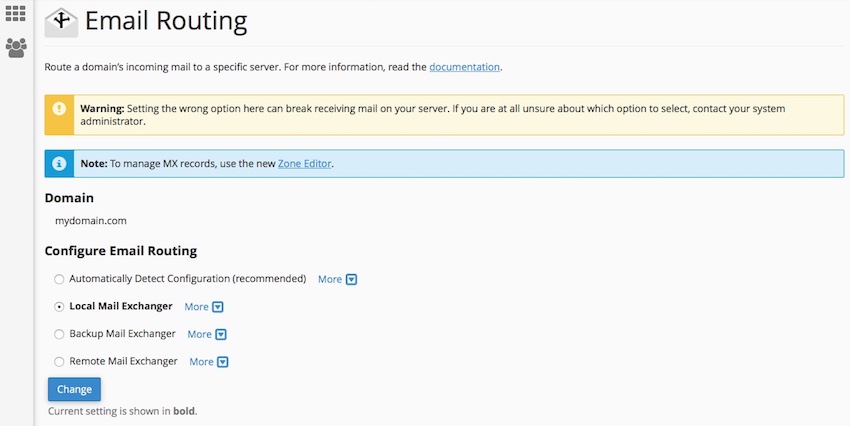Under the EMAIL section in cPanel there is an icon called "Email Routing".

When you select this you are presented with 4 options.

Essentially, the option selected under "Configure Email Routing" tells cPanel how you would like the mail services for your domain to be handled.
The four options can be explained as follows:
Automatically Detect Configuration: This means that the system uses the following criteria in order to detect the email routing settings:
1. If the lowest numbered mail exchanger (MX Record) points to an IP address on this server, it will use the Local Mail Exchanger
2. If the lowest numbered mail exchanger (MX Record) points to an IP address that is not on this server but other records do, it will use the Backup Mail Exchanger
3. If none of the mail exchangers (MX Records) point to an IP address on this server, it will use the Remote Mail Exchanger
Local Mail Exchanger: The server will always accept mail for this domain. The system will deliver mail to the local mailbox.
Backup Mail Exchanger: The server will act as a backup mail exchanger. The system will hold mail for this domain until a lower number mail exchanger is available.
Remote Mail Exchanger: The server will not accept mail for this domain. The system sends all mail for this domain to the lowest numbered mail exchanger.
If you use a third party email provider such as Gmail you will need to set your Email Routing to Remote Mail Exchanger and will also need to amend your MX Records. Please refer to the following Knowledgebase article for more details: How do I setup MX records for G Suite and Gmail with my domain?

